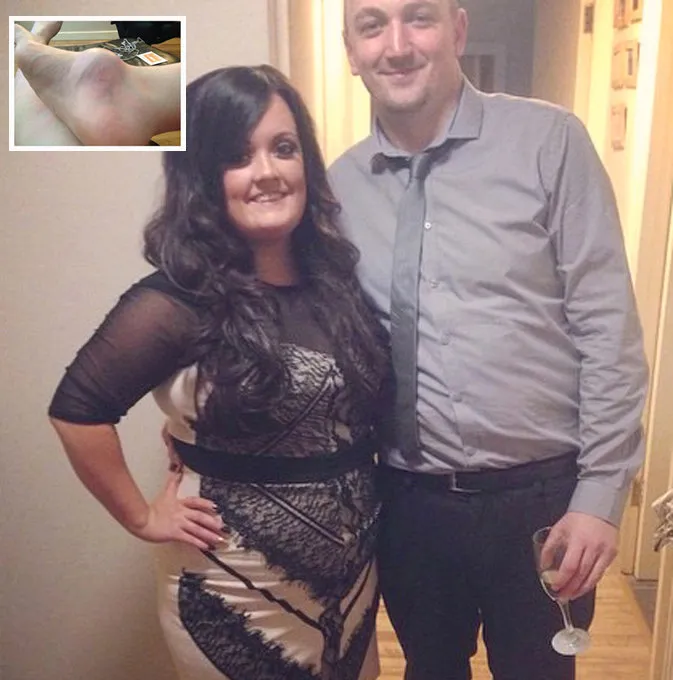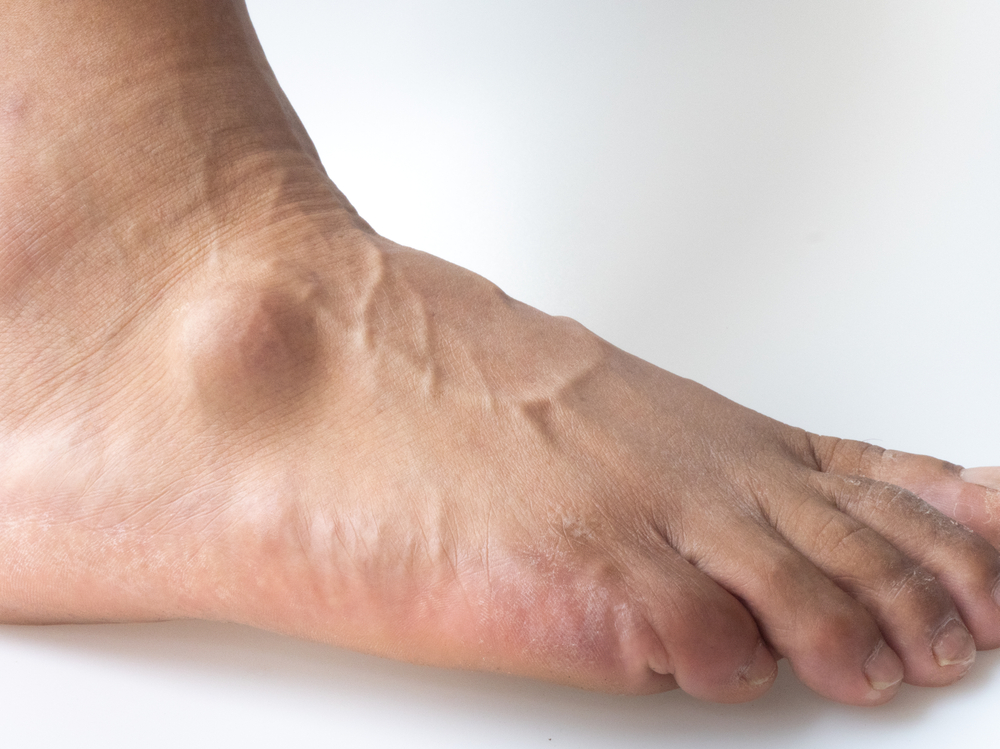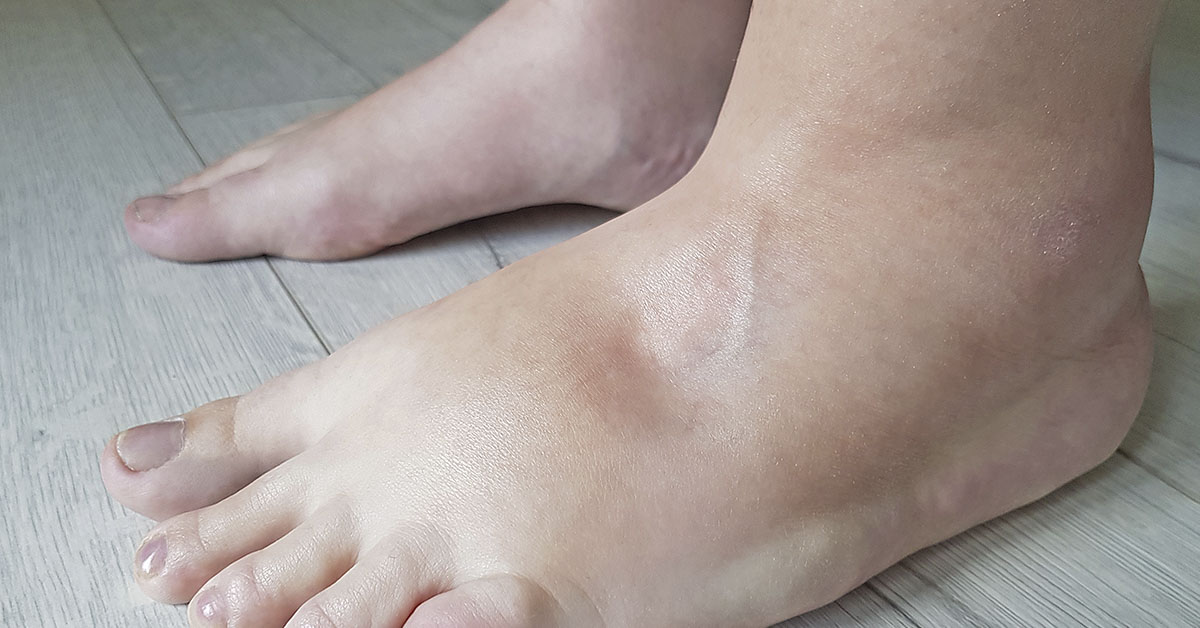For ten years of her life, Cheryl Murray lived with a painful, growing lump on her foot. Embarrassed by it, she hid it from her boyfriend for two years. Finally, when they moved in together, she could no longer hide the now golf ball-sized lump. He encouraged her to have it looked at, and just in time, too. The lump turned out to be cancer.
The Golf Ball-Sized Lump On My Foot Was Cancer

Murray first noticed the painful lump forming on her foot when she was just 15 years old. She went to her doctor, who prescribed her physiotherapy. They thought she had torn a ligament after a slip and fall. Over the next ten years, however, that lump continued to grow. It grew until it was the size of a golf ball and caused her excruciating pain if anything bumped it. (1)
At that time, she began dating her now husband, David. Embarrassed by it, she kept it hidden from him. It wasn’t until they moved in together that she knew she could no longer keep up the charade. Upon showing the lump to him, he suggested that perhaps she go back to the doctor for an explanation.
“David asked me what was wrong with my foot. I replied that it was torn ligaments, but he could tell it wasn’t, that it was more serious,” she recalled
Read More: Woman’s hips are crushed in a crash after she propped her feet up on the dashboard
The Day Everything Changed

Murray went to see her doctor, who ordered an X-ray, biopsy, and MRI scan. A surgeon then sat down with her to explain the results, giving her two pieces of news that no one ever wants to hear: She had cancer, a sarcoma, to be exact. They would need to amputate her lower leg as soon as possible to prevent the cancer from spreading.
“I was hysterical. I was so stunned I couldn’t speak,” Murray said. “I felt like I had been punched in the face twice in one day.”
Her boyfriend David stuck by her through every minute. He even proposed to her just weeks before her amputation. Murray says she credits him for how she got through the whole ordeal. He gave her a reason and the strength to go on.
What Is A Sarcoma of The Connective Tissue?

A sarcoma of the connective tissue is a rare form of cancer that affects the soft tissue, including muscles, tendons, and fat. It can also affect bones, cartilage, blood vessels, nerves, and other tissues in the body. Sarcomas are tumors that develop from cells in the tissue surrounding bones, muscles, and other connective tissues. They vary from one another in their appearance and location. Sarcomas can occur anywhere in the body but are most common in the arms or legs. (2)
What Causes Sarcomas?

The exact cause of these cancers isn’t known, but they are more common in adults than children. They are also more likely to occur in people who have undergone radiation therapy or chemotherapy for other types of cancers. The most common types of bone sarcomas are osteosarcoma (bone cancer), chondrosarcoma (cartilage cancer), and Ewing’s sarcoma (cancer that begins in the bone marrow). Most people with these cancers are between 15 and 30 years old when diagnosed. The risk for osteosarcoma increases as you get older; it is more common in adults than children.
Read More: How Your Feet Could Be Signaling Heart Problems and Clogged Arteries
What Are The Symptoms?

Symptoms vary depending on where the tumor is located. Symptoms may include a lump or mass under your skin and pain or swelling in one area of your body. The most common symptom is pain, which can be mild or severe. Other symptoms include:
- Swelling in one area of your body (especially if it does not go away)
- Bone deformity (such as a lump or bump on your bone that does not go away)
- Weakness in one part of your body (such as an arm or leg)
- Difficulty walking or moving around
- A change in the way you walk
- Loss of muscle mass and strength
A Happy Ending

Murray was very lucky to survive her cancer and to have the opportunity to plan her wedding with the man of her dreams. This story is yet another reminder that, when you think something is wrong or you have something chronically causing you pain and discomfort, get answers. If the first answers you receive don’t seem right to you or aren’t helping, keep searching. Be your own advocate and get the help you need. Your life could depend on it.
Read More: Pressure Points in Your Feet: Use This Foot Massage Chart for Pain Relief
Sources
- “Cancer Survivor Hid Golf Ball-Sized Lump From Boyfriend For 2 Years, But Showing Him Saved Her Life.” Huffington Post. PA Real Life. July 15, 2016.
- “Sarcoma.” Mayo Clinic

